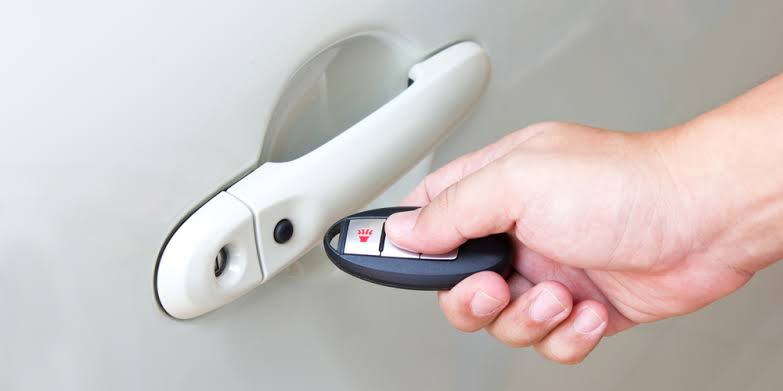Key fobs have become an integral part of modern automotive convenience, allowing us to unlock our vehicles with the simple press of a button. However, when a key fob fails to function, it can lead to frustration and, in some cases, urgent safety concerns.
This comprehensive guide looks into the common issues that may prevent your key fob from unlocking your vehicle’s doors and provides detailed solutions to address these problems.
Key Fob Functionality and Common Failures
A key fob is a small electronic device that is slowly rapidly replacing the traditional metal car key. This device transmits a unique radio signal to the vehicle's keyless entry system, allowing you to lock and unlock the doors, and sometimes even start the engine remotely. While convenient, key fobs can malfunction for various reasons. Let's explore the key functionalities and common failures associated with key fobs.
Key Fob Functionality
- Locking and Unlocking Doors: The primary function of a key fob is to remotely lock and unlock the car doors. Pressing the lock button sends a signal to the car's receiver, instructing it to lock the doors. Similarly, pressing the unlock button transmits a signal to unlock the doors.
- Trunk Release: Many key fobs also have a dedicated button for remotely opening the trunk.
- Panic Button: Some key fobs come equipped with a panic button that, when pressed, triggers the car's alarm system. This can be helpful in emergency situations to attract attention.
- Remote Start (if equipped): In some vehicles, the key fob can be used to remotely start the engine, allowing you to pre-heat or cool the car before getting in.
Several factors can disrupt the communication between the key fob and the car's keyless entry system, leading to malfunctions. Here are some common failures and troubleshooting tips:
- Battery Issues: This is the most frequent culprit. A weak or dead battery in the key fob can significantly reduce its signal strength, hindering communication with the car's receiver. Replacing the battery is a simple and inexpensive solution. It's recommended to replace the battery proactively every 1-2 years to avoid unexpected lockouts.
- Signal Reception: If the car isn't detecting the fob's signal even with a fresh battery, try holding the fob closer to the door handle while pressing the button. This can help determine if the issue lies with a weak battery in the fob or a problem with the car's receiver.
- Fob Damage: A physically damaged fob or a malfunctioning button on the fob itself could also be the cause. If other buttons on the fob (like trunk release) function normally, it suggests an issue with the specific button you're using.
- Code Desynchronization: Key fobs utilize rolling codes for enhanced security. These codes change with every use to prevent unauthorized access. However, in rare instances, the code sequence between the fob and the car's receiver can become desynchronized. This can be resolved by reprogramming the key fob at a dealership or using a specific procedure outlined in your car's owner's manual.
- Power Door Lock Issues: Even if the key fob transmits a proper signal, the car might not respond due to problems with the power door lock system itself. This could be caused by faulty wiring, malfunctioning control circuitry, or a blown fuse related to the power door locks. Troubleshooting these problems might require consulting a mechanic or referring to your car's repair manual.
- Car Battery: While uncommon, an extremely low or dead car battery can also prevent the power door locks from functioning, making it seem like a key fob issue. Ensure your car battery is in good health to avoid confusion.
Immediate Solutions for a Non-Responsive Key Fob
If you’re in an urgent situation and need to unlock your vehicle, here are some immediate steps you can take:
- Use a Spare Fob: If available, try using a spare key fob to unlock the door.
- Hidden Emergency Key: Many key fobs contain a hidden key that can be used to manually unlock the door.
- Hidden Key Slot: Look for a concealed key slot near the door handle to use the emergency key.
- Professional Assistance: If you’re unable to unlock the door, calling a professional, such as a locksmith or law enforcement officer, can provide a solution.
- Last Resort Measures: In an emergency where a life is at risk, breaking the window to gain access may be the only option.
Preventing Key Fob Hacking and Enhancing Security
With the rise of electronic hacking methods, it’s crucial to protect your key fob’s signal from being intercepted by thieves:
- Signal Blocking: Wrapping your key fob in aluminum foil or storing it in a metal container can prevent hacking attempts.
- Awareness: Be mindful of where you store your key fob, keeping it away from windows and doors where signals can be more easily hijacked.

Comments (0)
Please login to join the discussion
Be the first to comment on this article!
Share your thoughts and start the discussion